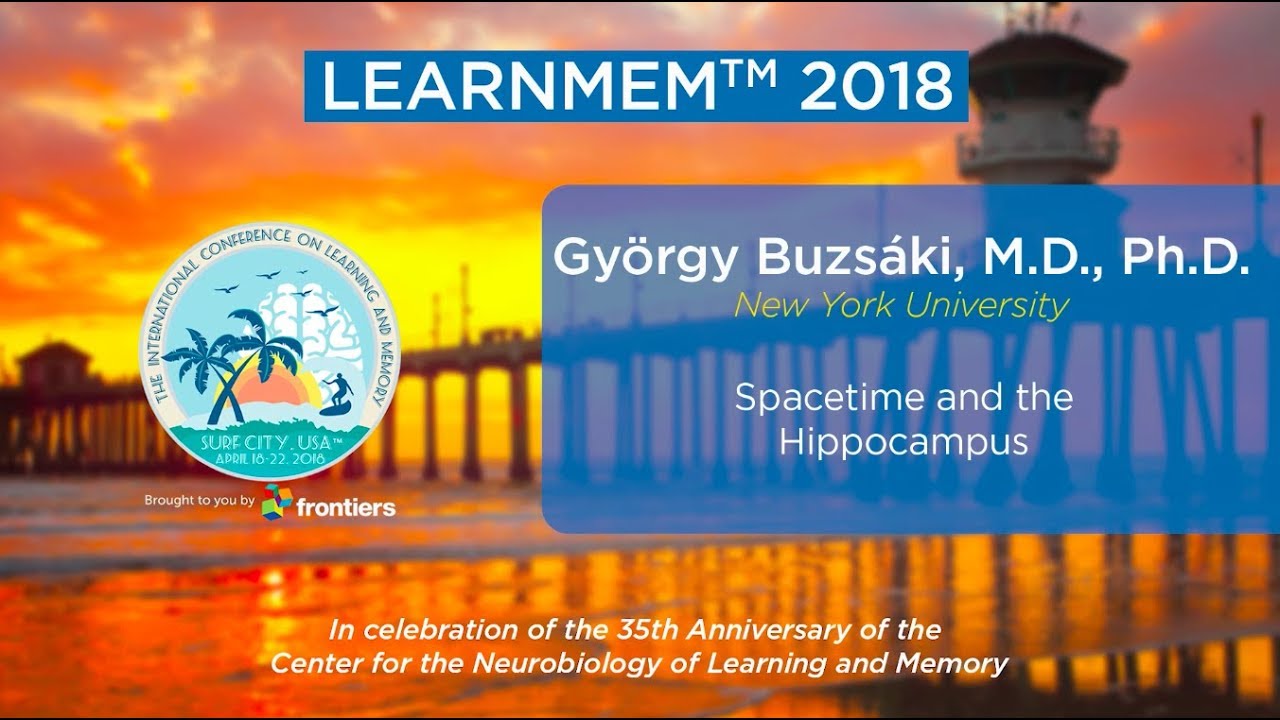

The discovery of brain structures that apparently mark time has raised a larger question: What is time, anyway?
Illustration by Gizem Vural
Time passed. Tsao became a Ph.D. student in the Trondheim lab; in 2014, the Mosers shared half a Nobel Prize. In 2015, just before he graduated, Tsao decided to take another look at his L.E.C. data. Eight years earlier, when he had examined the neurons’ individual behaviors, they had seemed to fire in unstable patterns that made no sense. This time, he conducted a different kind of statistical analysis, focussing on their combined firing patterns. When he looked at that data, he developed a hunch that the neurons were involved in representing the passage of time.
To test this idea, Tsao’s colleagues in the Moser lab conducted more experiments, putting the rats through twelve sessions in the black-or-white boxes. By the time that the new experiments were complete, Tsao had moved back to the United States, and, from there, he ran the statistical analysis again. Surveying the L.E.C’s collective-firing activity in the course of all the foraging expeditions, it seemed as though the brain region had kept track of each excursion separately. Tsao then analyzed another data set, this one from an experiment in which the rats ran a continuous loop around a figure-eight-shaped maze. In that case, the L.E.C. didn’t separate the different runs—the activations were piled on top of each other. Within each individual trial, however, the neurons seemed to mark the animal’s progress at different points along the loop.
Tsao, who is tall, long-haired, and soft-spoken, is now a postdoc at Stanford. When I met him, earlier this fall, in Palo Alto, he scribbled explanatory diagrams for me on a copy of a paper he had published in Nature, in September, with the Mosers and a few other collaborators. In it, the researchers argue that the neurons in the L.E.C. are creating “timestamps” that record the order of unfolding events. The fact that the cells’ firing patterns change depending on what the animal is experiencing suggests that the L.E.C. isn’t measuring time like a wristwatch. Instead, Tsao said, “It’s encoding ongoing experience.”
We take for granted our ability to conjure recollections of past events—to answer questions such as “What did you do last weekend?” But exactly how the cerebral cortex records the what, where, and when of our memories is something neuroscientists have long sought to understand. It’s now believed that grid cells help encode the locations of events in our memory. In a video call, May-Britt Moser explained how the L.E.C. network might do the same for the arrangement of events in time. (The Mosers still run their lab together, but they divorced in 2016.) In the moment, the researchers speculated, the rats could discriminate between one foraging expedition and the next, and so the L.E.C. generated separate “timestamps” for each one. By contrast, the laps around the figure-eight track were “so similar that it’s difficult to separate these sequences from each other,” Moser said. As a result, the “timestamps” were overlapping and indistinguishable. Take the same route to work every day, and the trips may blur in your mind.
Tsao and the Mosers think that the L.E.C.’s time-coding system might underlie our subjective perception of time. (When you’re busy and engrossed, time zips by; when you’re bored, it inches along.) Their theory is that neurons in the hippocampus—the center of memory formation in the brain—rely on inputs from the location- and time-encoding networks in the lateral and medial entorhinal cortex. “The same cells, we imagine, get information both about space and about time,” Edvard Moser said, via Skype. Once the two inputs “are mixed together,” a memory acquires a where and a when.
In recent years, a thriving neuroscientific subfield has emerged around the discovery of other kinds of “internal clocks” in the hippocampal system. “Time cells” identified by researchers at Boston University, in 2011, seem to mark the ticks of a neural “clock” as seconds elapse; in October, biologists at Northwestern University announced that they had found a set of neurons in the medial entorhinal cortex that “turn on like a clock when an animal is waiting.” (Their press release was titled, “Yes, Your Pet Can Tell Time.”) Tsao’s analysis, too, uncovered a few L.E.C. neurons that display timer-like firing patterns. Some cells slowed over the course of each trial in the box experiment, like music boxes winding down; others waned in the course of the entire twelve-trial experiment, which lasted more than an hour. Various “neural timekeepers” have been studied in other brain areas, too.
Yet a lively debate also exists around the question of what these kinds of cells are actually tracking. György Buzsáki, a neuroscientist at New York University, is highly regarded for his work decoding the “neural syntax” that allows ensembles of spiking neurons to encode information. A native Hungarian who favors heavy-duty Harry Potter-style glasses, Buzsáki has spent the last several years thinking, writing, and speaking about the puzzles presented by time, space, and the brain. The fact that experimenters have observed neural activity correlating with measurements of time, Buzsáki points out, doesn’t necessarily mean they’ve found a brain mechanism for computing or marking it, because all neural activity unfolds in time. Proving that a group of neurons has the function of monitoring time, or even marking the order of events, would require showing that other parts of the brain read and use its temporal signal.
To most of us, it seems self-evident that our brains must have something like a “sense” of time—a system for tracking the passage of time, analogous to the visual system, which detects changes in the visible world. Yet our heads contain no temporal “sensors”—and “neurons in the brain have no access to human-constructed instruments, so they have no clue about time,” Buzsáki noted when we spoke last month. Whatever our neurons are measuring, it’s not the tick of an actual clock. Moreover, he argued, both time and clocks are cultural constructions—inventions that modern societies have inherited from their predecessors. Some indigenous tribes experience “time” very differently. The Amondawa people of the Amazon, Buzsáki said, think in terms of “change”—when tribe members cross life thresholds, such as menstruation or marriage, they are given different names—but have no words for months or years and don’t know how old they are.
Speaking with Buzsáki, I found myself wondering what my brain was actually sensing when I seem to feel time flowing, second by second, minute by minute. “It has to be measuring something else, such as change or speed or acceleration, for which we do have sensors,” Buzsáki told me. If that’s the case, then “time” isn’t an absolute thing that our brains can “track” or “measure”; it’s more like an organizational system for making sense of change in the world around us and coördinating our lives.
“Of course time is change,” Edvard Moser agreed. Another way to describe his lab’s analyses of the L.E.C. would be to say that it uncovered changing sequences of activity during episodes of experience. “We call it ‘episodic time’ to emphasize that this is not ‘clock time,’ ” he said. “I still do think we have to call it something. It doesn’t really help us a lot to call it ‘rates of change.’ ”
The Trondheim group believes that the L.E.C.’s temporal signal is distributed across thousands of neurons, which express time on scales ranging from tens of seconds to more than an hour. Neuroscientists have various strategies for trying to pin down the specific functions of such neurons, and, via Skype, the Mosers outlined a few of them. One approach is to block the activity of a rat’s L.E.C., then study how well the animal performs a task that requires remembering a sequence of events. Examining Alzheimer’s patients could also yield clues: the entorhinal cortex is among the first brain regions affected, and problems with navigation are a hallmark of the disease. Researchers could investigate whether people with Alzheimer’s also have trouble remembering the order of events. These sorts of investigations could help establish whether other areas of the brain actually rely on the “timestamps” generated by the L.E.C.
In many ways, however, new findings in the neuroscience of time only underscore how little we know about time more broadly. We feel that we know what time is—that familiar, invisible, ceaseless flow. But the nature of time is an enigma, flummoxing thinkers across the disciplines and the millennia. The paradox that Augustine noted in the fourth century—“What, then, is time? If no one asks me, I know. If I wish to explain it to one that asks, I know not”—still holds true today.
https://www.newyorker.com/science/elements/the-neurons-that-tell-time?mbid=nl_Daily%20120418&CNDID=51540738&utm_source=nl&utm_medium=email&utm_campaign=Daily%20120418&utm_content=&utm_brand=tny&utm_mailing=Daily%20120418&hasha=8e15f739cfe946c809369f7c95f587a1&hashb=47bd7ccca0606a80478f56ba6097e680a2021b0d&spMailingID=14732388&spUserID=MjYyMTE3MTkxMzQzS0&spJobID=1540308293&spReportId=MTU0MDMwODI5MwS2




